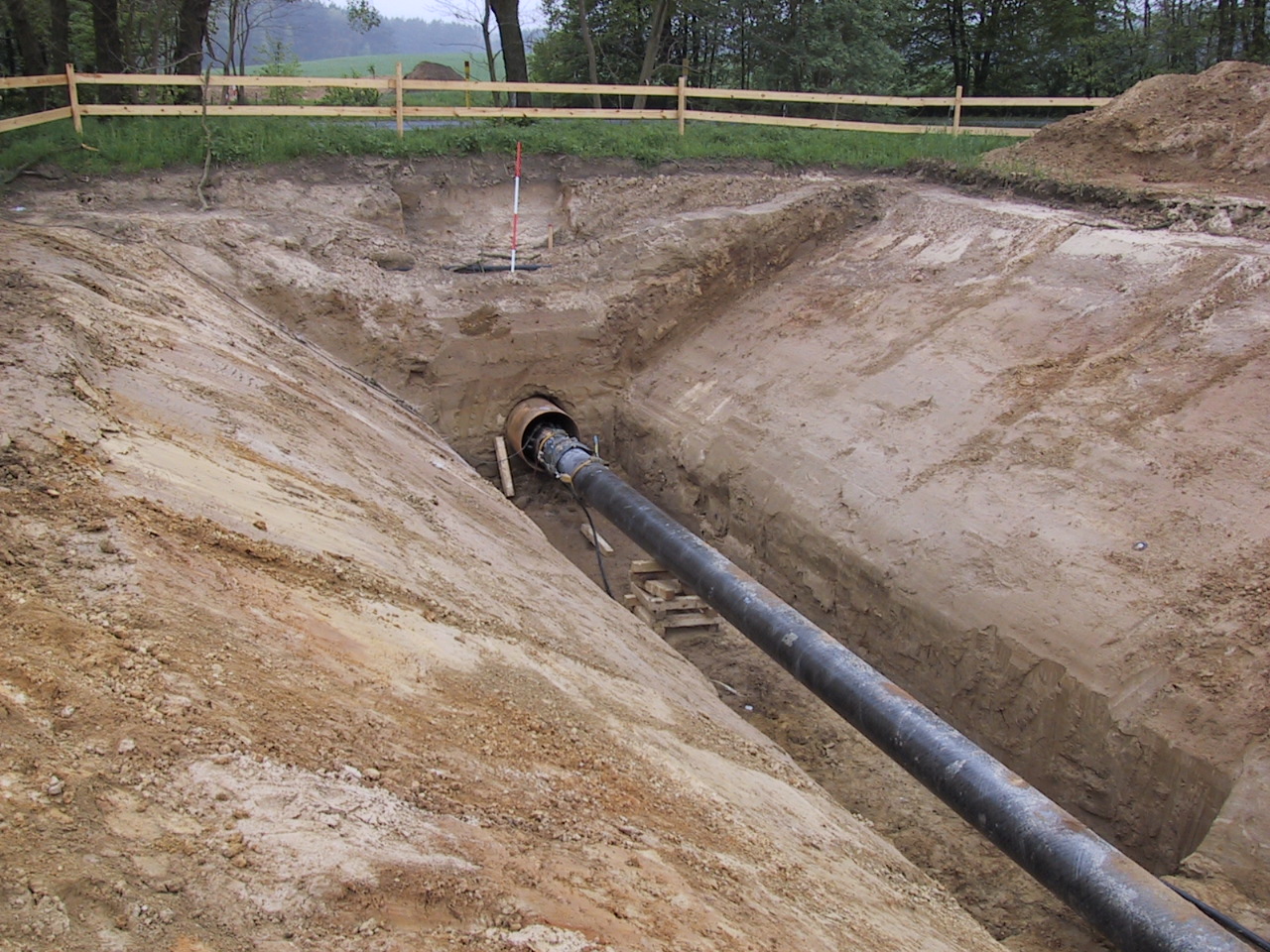Flowlines – pipelines or gas-lines often cross hazardous environmental areas, from the point of view natural exposures such as landslides and earthquakes, and from the point of view of third party influences such as vandalism or obstruction. These hazards can significantly change the original structural functioning of the flowline, leading to damaging, leakage and failure with serious economic and ecologic consequences. Furthermore, the operational conditions of the pipeline itself can induce additional wearing or even damage.
The structural and functional monitoring can significantly improve the pipeline management and safety. Providing regularly with parameters featuring the structural and functional condition of the flowline, monitoring can help (1) prevent the failure, (2) in time detect the problem and its position and (3) undertake maintenance and repair activities in time. Thus the safety is increased, maintenance cost optimized and economic losses decreased. Typical structural parameters to be monitored are strain and curvature while the most interesting functional parameters are temperature distribution, leakage and third-party intrusion. Since the flowlines are usually tubular structures with kilometric lengths, structural monitoring of full extent is an issue itself. The use of the discrete sensors, short- or long-gage is practically impossible, because it requires installation of thousands of sensors and very complex cabling and data acquisition systems raising the monitoring costs. Therefore, the applicability of the discrete sensors is rather limited to some chosen cross-sections or segments of flowline, but not extended to full length monitoring. Other current monitoring methods include flow measurements at the beginning and end of the pipeline, offering an indication of the presence of a leak, but no information on its location.
Recent developments of distributed optical fiber strain and temperature sensing techniques based on Brillouin scattering effect promise to provide a cost-effective tools allowing monitoring over kilometric distances. Thus, using a limited number of very long sensors it is possible to monitor structural and functional behavior of flowlines with a high measurand and spatial resolution at a reasonable cost.
Leakage detection in a Brine Pipeline
In 2002 the construction of a natural gas storage facility some 1500m under the ground surface was started in the area of Berlin in Germany. Using mining technology the building of underground caverns for gas storage in large rock-salt formation requires hot water and produces large quantities of water saturated with salt, the so-called brine. In most cases the brine cannot be processed on-site and must be transported by a pipeline to the location where it can either be used for chemical processes, or injected back safely into the ground. Because the brine can be harmful for the environment, the pipeline shall be monitored by a leakage detection system.
In the Berlin project a 55km pipeline was built and the company GESO was selected for the development and the installation of the leakage detection system [3]. In order to cover the whole pipeline distance, it was decided to use two DiTeSt analyzers although one instrument would have been theoretically able to cover the whole distance with its two channels. However the installation of the fiber cable required some 60 splices (that correspond to a additional loss of up to 3 dB) which reduces the distance range of the instrument accordingly and justified the use of two instruments, since the range extender technology was not yet available.
During the construction phase the temperature sensing was first placed in the trench and buried in the sand some 10 cm underneath the pipeline. The pictures in Fig. 6 show the construction of the pipeline before and after the pipeline was put in the trench.
The temperature profiles measured by both DiTeSt instruments are transferred every 30 minutes to a central PC and further processed for leakage detection. A dedicated software performs the leakage detection through a comparison between recorded temperature profiles, looking at abnormal temperature evolutions and generates alarm in the case of the detection of leakage. The system is able to automatically transmit alarms, generate reports, periodically reset and restart measurements, and requires virtually no maintenance.
The pipeline construction phase was completed in November 2002 and the pipeline was put into operation in January 2003. In July 2003, a first leakage was detected by the monitoring system. It was later found that the leakage was accidentally caused by excavation work in the vicinity of the pipeline. An alarm was immediately and automatically triggered and the flow was eventually stopped.


Construction phase of a buried brine pipeline in the north-east area of Berlin. The fiber optics cable is placed in the sand at the 6 o’clock position about 10 cm underneath the pipeline.
Distributed strain/deformation and temperature sensing for pipeline integrity monitoring is a useful tool that ideally complements the current monitoring and inspection activities, allowing a more dense acquisition of operational and safety parameters. The measurements are performed at any point along the pipeline and not at specific positions only. Furthermore, the monitoring is continuous and does not interfere with the regular pipeline operation, contrary to e.g. pigging operations. The method can also be applied to non-piggable pipes.
ES&S are the exclusive Australian and New Zealand distributors for the SMARTEC Fiber Optic Leak Detection systems. Contact geotechnical@esands.com for more information on how this leak detection system can work for your pipeline.